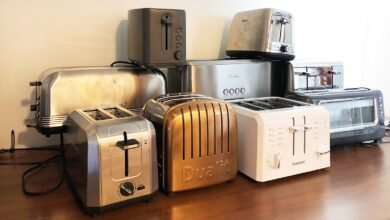The Ultimate Guide to Baby Bottle Sterilizers: Keeping Your Baby Safe and Healthy

As a new parent, ensuring your baby’s safety and health is your top priority. One essential aspect of baby care is properly sterilizing feeding bottles to eliminate harmful bacteria and germs. Baby bottle sterilizers have become increasingly popular for their convenience and effectiveness. This guide will explore the types of bottle sterilizers, their benefits, and tips for choosing the right one for your family.
Why You Need a Baby Bottle Sterilizer
1. Safety and Hygiene
Babies have developing immune systems, making them more susceptible to infections. Sterilizing bottles ensures that harmful bacteria, viruses, and mold are eliminated, providing a clean environment for feeding. This is especially crucial for newborns and infants under six months, who are at higher risk of illness.
2. Convenience
Manual sterilization methods, like boiling, can be time-consuming and inconvenient. A bottle sterilizer simplifies the process, allowing you to sterilize multiple bottles quickly and efficiently. Many models are designed for easy use, making them a great choice for busy parents.
3. Versatility
Many sterilizers are versatile and can be used for more than just bottles. They can often sterilize pacifiers, teething toys, and breast pump parts, making them a valuable addition to your baby care routine.
Types of Baby Bottle Sterilizers
1. Electric Bottle Sterilizers
Electric sterilizers are among the most popular options. They use steam to sterilize bottles and can usually accommodate several at once. Most electric sterilizers have automatic shut-off features and can sterilize bottles in as little as 5 to 15 minutes.
Pros:
- Quick and efficient
- Can sterilize multiple bottles simultaneously
- Easy to use
Cons:
- Requires an electrical outlet
- Can be bulkier than other options
2. Microwave Sterilizers
Microwave sterilizers are designed to be used in your microwave oven. These containers hold bottles and water, generating steam when heated. They are compact and perfect for travel.
Pros:
- Fast and portable
- Doesn’t require additional electricity
- Compact for easy storage
Cons:
- Requires a microwave
- May not hold as many bottles as electric models
3. Cold Water Sterilizers
Cold water sterilizers use a solution to sanitize bottles. You simply immerse the bottles in the solution for a specified time. This method is particularly useful for those who prefer a chemical-free option.
Pros:
- Effective without heat
- Can be used for extended periods
- Suitable for all types of bottles
Cons:
- Takes longer to sterilize
- Requires frequent solution changes
4. UV Sterilizers
UV sterilizers use ultraviolet light to kill bacteria and germs. These models are becoming increasingly popular due to their effectiveness and ease of use. They can sterilize not only bottles but also pacifiers, toys, and other baby items.
Pros:
- Chemical-free and safe
- Portable and often rechargeable
- Kills 99.9% of germs
Cons:
- Typically more expensive
- May require more time for larger items
Features to Look For
When choosing a baby bottle sterilizer, consider the following features:
1. Capacity
Determine how many bottles you need to sterilize at once. If you have twins or plan to use multiple bottles daily, a larger capacity model may be necessary.
2. Speed
Look for a sterilizer that offers quick sterilization cycles. Some electric models can complete the process in as little as five minutes, which is ideal for busy parents.
3. Ease of Use
Choose a sterilizer that is straightforward to operate. Features like one-button operation and automatic shut-off can make the process more convenient.
4. Portability
If you plan to travel often, consider a compact or microwave sterilizer. Portability is essential for maintaining hygiene while on the go.
5. Cleaning and Maintenance
Select a model that is easy to clean. Some sterilizers have removable parts that can be washed separately, ensuring proper hygiene.
Tips for Using Baby Bottle Sterilizers
1. Follow Manufacturer Instructions
Always read and follow the instructions provided with your sterilizer. This ensures that you achieve the best results and maintain the longevity of the appliance.
2. Pre-Wash Bottles
Before sterilizing, rinse bottles and accessories with hot, soapy water to remove any milk residue. This step enhances the sterilization process.
3. Store Sterilized Bottles Properly
After sterilization, store bottles in a clean, dry place. Avoid touching the inside of the bottles to maintain hygiene.
4. Regular Maintenance
Clean your sterilizer regularly according to the manufacturer’s instructions to ensure optimal performance and prevent mineral buildup.
Conclusion
Investing in a baby bottle sterilizer can significantly enhance your baby’s health and safety during feeding. With various types available, including electric, microwave, cold water, and UV sterilizers, you can find one that fits your family’s needs and lifestyle. By keeping your baby’s bottles and accessories clean and sanitized, you’ll create a safer feeding environment, allowing you to focus on what matters most—spending quality time with your little one. Happy parenting!



